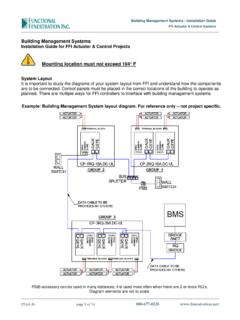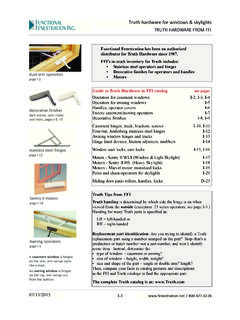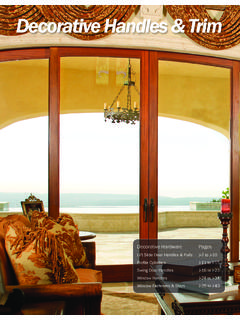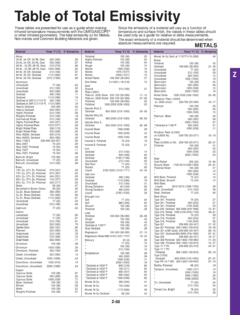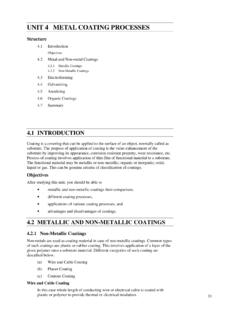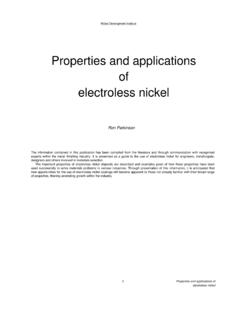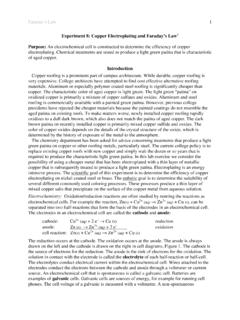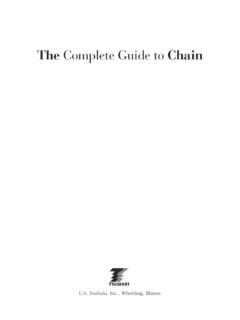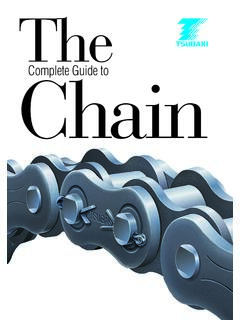Transcription of THE GALVANIC TABLE - fenestration.net
1 FFI Technical Dept. page 1 - 1 rev. 011209 DISSIMILAR METALS PREVENTING ELECTROLYSIS electrolytic Corrosion (Electrolysis) occurs when dissimilar metals are in contact in the presence of an electrolyte, such as water (moisture) containing very small amounts of acid. The dissimilar metals set up a GALVANIC action which results in the deterioration of one of them. The following is a list of the more common commercial metals, sequenced according to what is known as the " GALVANIC TABLE ": THE GALVANIC TABLE 1. Aluminum 2. Zinc 3. Steel 4. Iron Anodic or Active (+) 5. nickel 6. Stainless Steel Series 400 7.
2 Tin 8. Lead 9. Brass 10. Copper 11. Bronze 12. Stainless Steel Series 300 Cathodic or Passive (-) When any two metals in the GALVANIC TABLE above are in contact, with an electrolytic present, the one with the lower number is corroded. The GALVANIC action increases as the metals are farther apart in the GALVANIC Series. It is not always true that there is greater corrosion the further down the scale one goes. In certain cases one metal immediately following another may be very corrosive. One of the most important facts that one should know about a metal or an alloy is its reaction with other metals or alloys with which it may be in contact. This data is given in the GALVANIC TABLE . Here the metals are listed in a sequence in which each metal is corroded by all that follow it.
3 In other words, when two different metals are in contact with each other in the presence of moisture, there will be a flow of current from one metal (the anode ) to the other metal (the cathode ), and one will be eaten away, or disintegrated, while the other (the cathode ) will remain intact. An important point to remember in utilizing the GALVANIC Series is that moisture is the chief problem in this type of corrosion, and moisture depends a great deal upon climate. In the desert, electrochemical action will be at a minimum. On the seacoast the action will be much greater, not only because of the ever-present moisture, but also because of the salt. Some means of separating dissimilar metals must therefore always be found. In any GALVANIC combination, the relative areas of the two materials forming the couple have a very important bearing on the extent of the corrosion.
4 Under many conditions the extent of GALVANIC effect will be directly proportional to the ratio of the area of the metal lower in the list. Thus, if a piece of steel having a surface area of two square inches is coupled to a piece of copper having a surface area of 100 square inches, the GALVANIC corrosion is roughly 50 times faster than it would be if the same piece of steel were coupled to a piece of copper having a surface area of two square inches. For this reason, it is wise to avoid GALVANIC couples where the exposed area of the metal lower in the GALVANIC series is much greater than that of the metal high in this series. As a practical example, it would definitely be dangerous to use a steel rivet to a copper plate, but reasonably safe to use a copper rivet to a steel plate.
